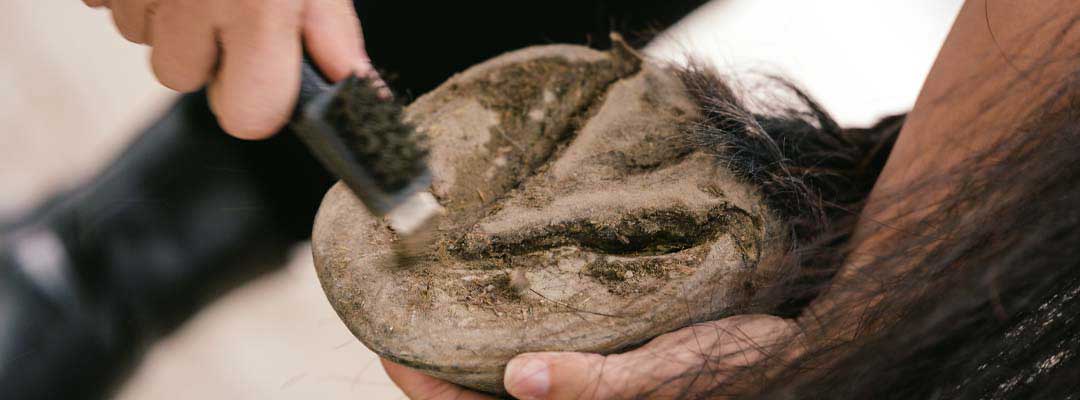Tackling Thrush in Horses
Learn more about the common condition, hoof thrush, and about thrush treatment for horses

Whew, do you smell that?
Once you smell thrush, it’s unlikely you will ever forget it.
Equine thrush infection is a hoof condition that many horse owners battle. It is described as an infection localized in the “frog” of the hoof, especially the grooves on the sides and middle of the frog called the sulci. The condition is characterized by a foul odor, a dark-colored discharge, soreness of the frog and deformation of the frog’s shape.
Thrush has been positively identified as being a bacterial infection of the soft tissue of the hoof, which is caused by Fusobacterium necrophorum. This anaerobic bacteria is a natural part of a healthy horse’s gut flora. It passes through their system and gets picked up on the hoof. While thrush is encouraged by dark, wet conditions, a case can occur in even the best of circumstances.
How do you identify thrush?
What causes thrush?
How do you treat thrush?
How long will it take to treat thrush?
Because of the nature of this infection, and the possibility of reinfection, it will take persistence to fully treat a case. Don’t give up after a few days -- it can take weeks. Though thrush can happen in just about any barn, it can be successfully managed when a comprehensive hoof care plan is implemented.
To help reduce risk for thrush and support excellent hoof care for your horse, schedule regular farrier visits every six to eight weeks. Also, pick your horses’ hooves often, daily if possible. Fight back bacteria and fungus with a proven thrush treatment solution, and make sure the paddocks and bedding are as dry as possible.
Looking to learn more about common hoof problems your horse may experience? Continue reading for details on types of horse hoof cracks, or, learn answers to common hoof care questions in this Q&A with a horse farrier.
About the author: This content was originally provided by Absorbine/W.F. Young, manufacturer of Hooflex Thrush Remedy, with additions included from Valley Vet Supply.


